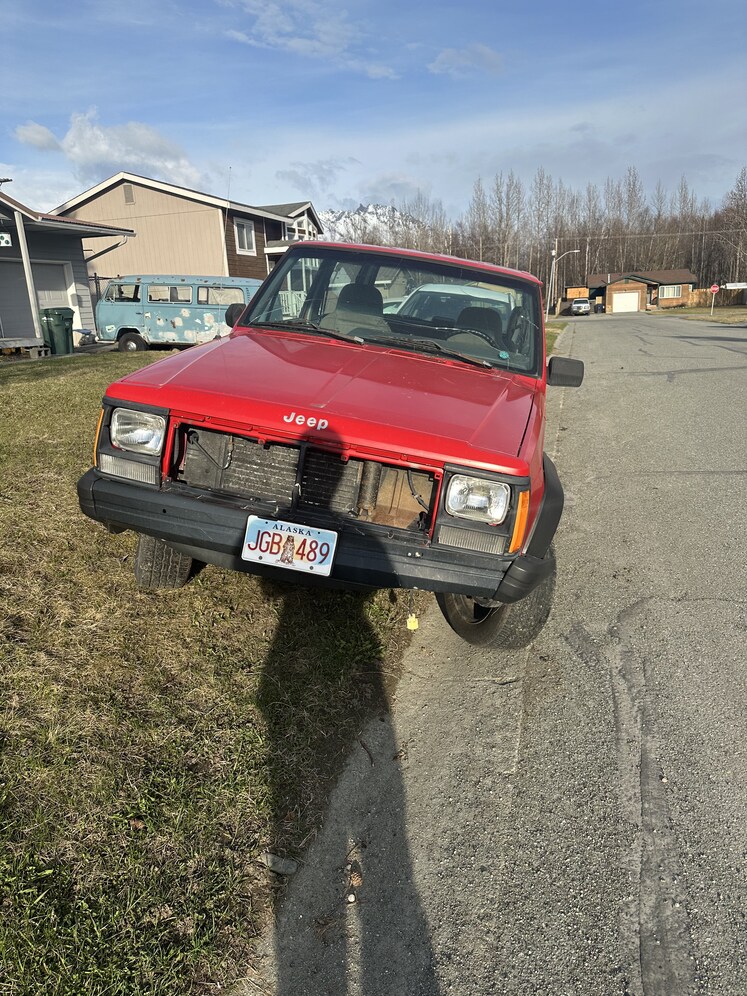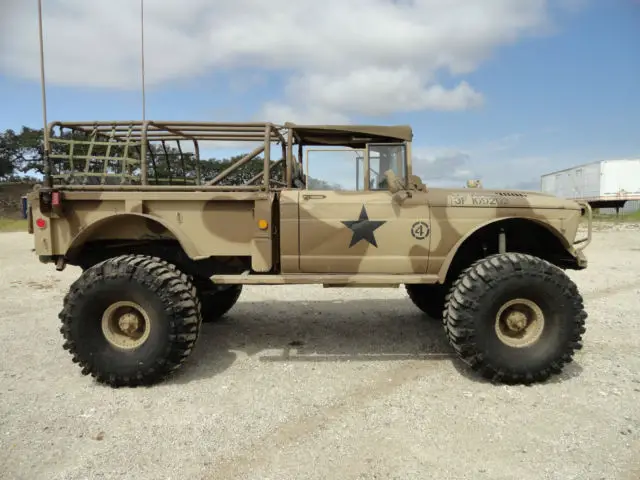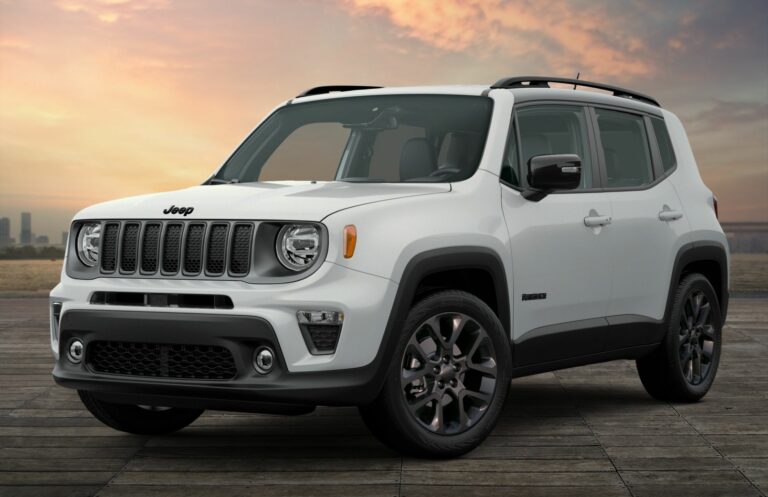1996 Jeep Cherokee XJ For Sale: Your Comprehensive Guide to Finding and Owning an Automotive Icon
1996 Jeep Cherokee XJ For Sale: Your Comprehensive Guide to Finding and Owning an Automotive Icon jeeps.truckstrend.com
Introduction: The Enduring Legacy of the 1996 Jeep Cherokee XJ
In the vast landscape of automotive history, few vehicles command the enduring affection and cult status of the Jeep Cherokee XJ. And among its various iterations, the 1996 model year stands out as a particular sweet spot for many enthusiasts and practical buyers alike. The 1996 Jeep Cherokee XJ, a unibody SUV produced by Chrysler under the Jeep brand, represents the pinnacle of a design philosophy that prioritized rugged simplicity, unparalleled off-road capability, and remarkable reliability.
1996 Jeep Cherokee XJ For Sale: Your Comprehensive Guide to Finding and Owning an Automotive Icon
For those looking for a vehicle that blends classic utility with modern-day practicality, finding a 1996 Jeep Cherokee XJ for sale isn’t just about acquiring a mode of transport; it’s about investing in a piece of automotive heritage. It’s a vehicle renowned for its legendary 4.0-liter inline-six engine, robust solid axles, and a design that is both timeless and eminently customizable. Whether you’re an off-road adventurer, a DIY mechanic, or simply someone who appreciates a vehicle built to last, understanding the nuances of purchasing a 1996 XJ is crucial. This comprehensive guide will delve into everything you need to know about this iconic SUV, from its core features to the practicalities of finding, buying, and owning one.
The Enduring Appeal of the 1996 Jeep Cherokee XJ
Why does the 1996 Jeep Cherokee XJ continue to be a highly sought-after vehicle, decades after its production? Its appeal stems from a unique combination of attributes that are increasingly rare in modern vehicles:
- Legendary Durability and Reliability: At the heart of the 1996 XJ’s reputation is its 4.0L "High Output" inline-six engine. This powerplant is renowned for its bulletproof reliability, capable of racking up hundreds of thousands of miles with proper maintenance. Its simple, robust design makes it easy for owners to perform repairs and upkeep.
- Unmatched Off-Road Prowess: Despite its relatively compact size, the XJ is a true off-road beast. Its unibody construction offers surprising rigidity, while its solid front and rear axles (Dana 30 front, often Chrysler 8.25 or Dana 35 rear) provide excellent articulation and durability. Coupled with a capable 4×4 system, the XJ can tackle trails that challenge much larger, more modern SUVs.
- Vast Customization Potential: The aftermarket support for the Jeep Cherokee XJ is immense. From lift kits and heavy-duty bumpers to engine upgrades and interior modifications, owners can tailor their XJ to suit any purpose, whether it’s an extreme rock crawler, an overland expedition vehicle, or a comfortable daily driver. This versatility adds significantly to its appeal.
- Simplicity and Ease of Maintenance: Unlike many contemporary vehicles laden with complex electronics, the 1996 XJ maintains a level of mechanical simplicity that appeals to home mechanics. Common repairs are often straightforward, and parts are widely available and relatively inexpensive.
- Classic Aesthetics and Value Retention: The XJ’s boxy, utilitarian design has become a classic, instantly recognizable silhouette. Its timeless appeal, combined with its capabilities and a passionate owner base, means that well-maintained examples often hold their value remarkably well, sometimes even appreciating.

Key Specifications and Trim Levels of the 1996 Jeep Cherokee XJ
Understanding the specific features of the 1996 model year is important for any prospective buyer. While the XJ platform remained largely consistent throughout its production, 1996 was a strong year with specific configurations.
- Engine: The primary engine for 1996 was the 4.0-liter (242 cubic inch) AMC PowerTech I6, producing 190 horsepower and 225 lb-ft of torque. A 2.5-liter four-cylinder engine was also available, but is far less common and generally less desired due to lower power output.
- Transmissions:
- Automatic: The Aisin-Warner AW4 4-speed automatic transmission is highly regarded for its durability and smooth operation.
- Manual: The Aisin AX-15 5-speed manual transmission was also an option, offering a more engaging driving experience and often better fuel economy.
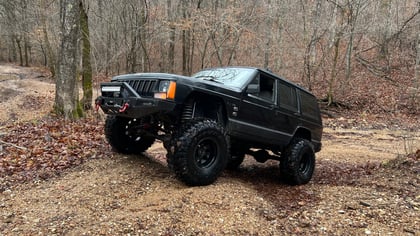
- Transfer Cases:
- NP231 Command-Trac: A part-time 4×4 system, ideal for off-road use, offering 2WD, 4H (part-time), N, and 4L.
- NP242 Selec-Trac: A full-time 4×4 system, allowing for 2WD, 4-Part Time, 4-Full Time, N, and 4L. The "full-time" option is excellent for mixed-condition driving, including paved roads.
- Axles:
- Front: Dana 30 reverse cut (high pinion) axle.
- Rear: Depending on the trim level and package, either the Dana 35 or the more robust Chrysler 8.25. The Chrysler 8.25 is generally preferred for its stronger design and larger axle shafts.
- Trim Levels: The 1996 XJ was available in several trim levels, each offering different features and amenities:
- SE: Base model, often with minimal features.
- Sport: More popular, featuring body-colored grilles, sport seats, and often more options.
- Country: More luxurious, with chrome accents, upgraded interior, and often Selec-Trac.
- Limited: Top-tier, with leather seats, power options, and full amenities.
- Classic: Introduced later in the XJ’s run, offering a blend of features.
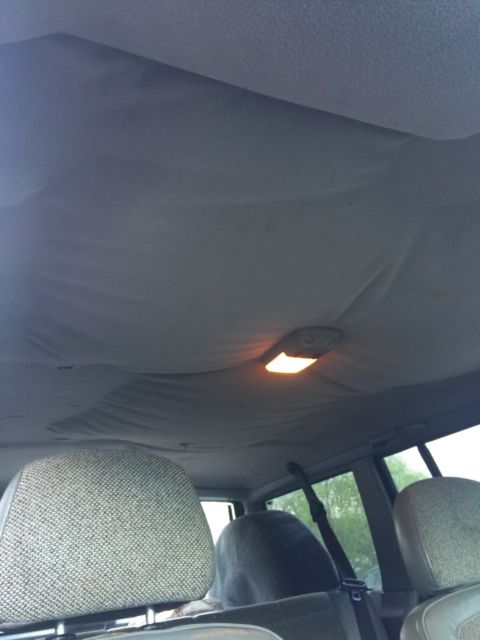
Navigating the Purchase: What to Look For When Buying a 1996 XJ
When searching for a 1996 Jeep Cherokee XJ for sale, a thorough inspection is paramount. These vehicles are old, and their condition can vary wildly. Here’s a comprehensive checklist:
- Rust: This is the XJ’s Achilles’ heel. Inspect the unibody frame rails, rocker panels (especially behind the front wheels), floorboards, rear quarter panels (where the leaf springs attach), and the spare tire well. Surface rust is common; perforating rust is a major red flag.
- Engine (4.0L I6):
- Leaks: Check for oil leaks, especially the rear main seal (very common but not always critical) and the oil filter adapter (easier fix).
- Cooling System: Inspect the radiator, hoses, and water pump for leaks. Overheating is a known XJ issue; ensure the electric fan works.
- Exhaust Manifold: Listen for ticking sounds, indicating a cracked exhaust manifold (also common).
- Maintenance Records: Ask for any service history to gauge previous care.
- Transmission:
- AW4 Automatic: Check fluid color (should be reddish, not dark or burnt). Test all gears, including reverse, and ensure smooth shifts without slipping or harsh clunks.
- AX-15 Manual: Test clutch engagement, listen for grinding during shifts, and check for any difficulty getting into gear.
- Transfer Case: Engage 2WD, 4H, and 4L (and 4-Full Time if NP242) to ensure smooth engagement and no grinding noises.
- Suspension and Steering:
- "Death Wobble": This violent shaking of the front end at speed is common. It’s usually caused by worn components (track bar, ball joints, tie rod ends, control arm bushings). Inspect all these parts.
- Saggy Leaf Springs: The rear leaf springs commonly sag, giving the XJ a "squatted" appearance. This affects ride quality and load capacity.
- Shocks: Check for leaks or excessive bounce.
- Electrical System: Test all lights, power windows, power locks, gauges, radio, and HVAC system.
- Interior: Check the condition of the seats (especially driver’s side), headliner (often sags), and dashboard (prone to cracks).
- Modifications: Many XJs are modified. Assess the quality of the modifications. A poorly installed lift kit or shoddy wiring can cause more problems than they solve. Look for reputable brands and professional installation.
Finding Your XJ: Where to Search Effectively
Locating a 1996 Jeep Cherokee XJ for sale requires patience and knowing where to look.
- Online Marketplaces:
- Craigslist and Facebook Marketplace: These are prime hunting grounds for private sellers. Be specific in your searches (e.g., "1996 Jeep Cherokee," "XJ 4.0L"). Filter by mileage, price, and location.
- eBay Motors: Good for finding XJs across a wider geographic area, often including more detailed listings and auction formats.
- Autotrader/Cars.com: Less common for older vehicles but worth a look.
- Specialized Forums and Clubs: Websites like NAXJA (North American XJ Association) forums, dedicated Jeep Cherokee Facebook groups, and local 4×4 clubs often have classified sections where enthusiasts sell their well-maintained vehicles. These sources can yield higher-quality, often better-documented examples.
- Local Dealerships: Less likely to find older XJs, but sometimes smaller used car lots might have one.
- Auctions: Public or salvage auctions can be sources, but these typically require a higher level of mechanical knowledge and risk tolerance.
- Word of Mouth: Let friends, family, and local mechanics know you’re looking. Sometimes the best deals come from unexpected places.
Tips for Searching: Be prepared to travel for a good example. Expand your search radius beyond your immediate area. Don’t be afraid to ask for more pictures or a video walk-around before making a long trip.
Understanding the Market: Pricing and Value
The price of a 1996 Jeep Cherokee XJ for sale can vary significantly based on several factors:
- Condition: This is the most crucial factor. A rust-free, well-maintained XJ with low mileage will command a premium.
- Mileage: While the 4.0L engine is robust, lower mileage usually indicates less wear and tear on other components.
- Rust: The presence and extent of rust are huge determinants of value. Significant rust dramatically lowers the price.
- Modifications: Quality, tasteful modifications (e.g., a professionally installed lift kit with good components, upgraded axles) can add value. Poorly done or extreme modifications can detract from it.
- Trim Level: Higher trim levels (Limited, Country) often fetch more, especially if well-preserved.
- Location: Prices can vary regionally, with drier climates generally yielding rust-free examples that cost more.
- Maintenance Records: A complete service history adds significant value and peace of mind.
Average Price Ranges (Approximate):
| Condition | Description | Estimated Price Range (USD) |
|---|---|---|
| Project | Significant rust, major mechanical issues, non-running, or highly neglected. Requires substantial work. | $500 – $2,500 |
| Fair | Runs and drives, but has noticeable rust, cosmetic flaws, and/or minor mechanical issues. Needs attention but is drivable. | $2,500 – $5,000 |
| Good | Minimal rust, decent paint and interior, runs strong, and most systems work. May have minor issues that are easily fixed. A solid daily driver or reliable base for modifications. | $5,000 – $8,000 |
| Excellent | Very little to no rust, excellent paint, clean interior, well-maintained mechanically. Often low mileage for its age. Could be a collector’s item or a pristine base for a high-end build. Includes highly sought-after factory configurations (e.g., manual, 8.25 axle). | $8,000 – $15,000+ |
Note: Prices are highly variable and depend on the specific vehicle, local market conditions, and recent maintenance/upgrades.
Negotiation Tips:
- Be knowledgeable about common XJ issues.
- Point out any flaws you find during inspection to justify a lower offer.
- Have cash ready if buying from a private seller.
- Don’t be afraid to walk away if the price or condition isn’t right.
Owning and Modifying Your XJ: Challenges and Solutions
Owning a 1996 Jeep Cherokee XJ is a rewarding experience, but it comes with its own set of considerations.
-
Common Maintenance & Issues:
- Cooling System: The XJ’s cooling system is often a weak point. Regular flushing, inspection of hoses, water pump, and fan clutch are vital. Upgrading to a three-row radiator is a popular solution.
- Rear Main Seal (RMS) Leak: Almost every 4.0L XJ will leak from the RMS at some point. It’s often minor and not a catastrophic issue, but it’s a known characteristic.
- Exhaust Manifold Crack: The factory exhaust manifold is prone to cracking, causing a ticking sound. Aftermarket headers are a common replacement.
- Sagging Leaf Springs: Over time, the rear leaf springs flatten out, reducing ride height and load capacity. Aftermarket leaf packs or "add-a-leaf" kits are common fixes.
- "Death Wobble": As mentioned, this is a serious safety concern that demands immediate attention. Diagnosing and replacing worn steering and suspension components (track bar, tie rods, ball joints, control arms) will resolve it.
-
Fuel Economy: Don’t expect hybrid-like MPG. The 4.0L XJ typically gets 15-18 MPG combined, depending on tire size, lift, and driving habits.
-
Customization and Upgrades: This is where the XJ truly shines.
- Lift Kits: Ranging from 1.5-inch budget boosts to 6.5-inch long-arm systems, lifts allow for larger tires and improved ground clearance.
- Tires: Upgrading to all-terrain or mud-terrain tires significantly enhances off-road performance.
- Armor: Aftermarket bumpers, rock sliders, and skid plates protect the vehicle during off-road excursions.
- Axle Upgrades: For serious off-roading, upgrading from the Dana 35 to a stronger Chrysler 8.25 or even a Ford 8.8 is common.
- Interior Mods: Upgraded seating, sound systems, and storage solutions can enhance daily driving comfort.
The XJ is a vehicle that encourages DIY work. With a good set of tools, a repair manual, and the vast resources available online (forums, YouTube), many owners find joy in maintaining and upgrading their own vehicles.
Frequently Asked Questions (FAQ) About the 1996 Jeep Cherokee XJ For Sale
Q: Is the 1996 Jeep Cherokee XJ reliable?
A: Yes, particularly the 4.0L inline-six engine is known for its legendary reliability and longevity, often lasting well over 200,000 miles with proper maintenance. Other components are generally robust, though age-related wear is to be expected.
Q: What is "death wobble" and how do I fix it?
A: "Death wobble" is a violent, uncontrolled shaking of the front end, usually occurring at highway speeds after hitting a bump. It’s almost always caused by worn or loose steering and suspension components like the track bar, tie rod ends, ball joints, or control arm bushings. Fixing it involves diagnosing and replacing the worn parts.
Q: What’s the best engine/transmission combination for an XJ?
A: The 4.0L inline-six engine is universally recommended for its power and reliability. For transmissions, the Aisin-Warner AW4 automatic is incredibly durable and a popular choice. The AX-15 manual is also excellent if you prefer a stick shift.
Q: Are parts hard to find for a 1996 XJ?
A: No, parts are incredibly easy to find. Due to the XJ’s popularity and long production run, aftermarket support is extensive, and many OEM replacement parts are still available from dealerships or online retailers. Junkyards are also a good source for used parts.
Q: Can a 1996 XJ be a daily driver?
A: Absolutely. Many XJ owners use their vehicles as daily drivers. While they lack some modern amenities and fuel economy isn’t stellar, their reliability, relatively comfortable ride (for a solid-axle vehicle), and compact size make them perfectly capable daily commuters.
Q: What’s the difference between the NP231 and NP242 transfer cases?
A: The NP231 (Command-Trac) is a part-time 4×4 system, meaning you should only use 4WD on loose or slippery surfaces. The NP242 (Selec-Trac) offers both part-time and full-time 4WD modes. The full-time option allows you to drive in 4WD on dry pavement, making it more versatile for varying conditions.
Q: Is rust always an issue with XJs?
A: Rust is a very common issue, especially in regions with road salt or high humidity. It primarily affects the unibody frame rails, rocker panels, and floorboards. However, XJs from dry, southwestern states are often rust-free and command a higher price. Thorough inspection for rust is crucial when buying.
Conclusion: Your Journey to XJ Ownership
The 1996 Jeep Cherokee XJ remains an automotive legend, a testament to robust engineering and timeless design. For those seeking a vehicle that blends raw capability with a strong sense of character, finding a 1996 Jeep Cherokee XJ for sale offers an unparalleled opportunity. Whether you’re looking for a dependable daily driver, a formidable off-road machine, or a project vehicle to hone your mechanical skills, the XJ delivers.
By understanding its key features, knowing what to look for during an inspection, and being aware of the market’s nuances, you can navigate the purchase process with confidence. While older vehicles come with their own set of challenges, the extensive community support, readily available parts, and the XJ’s inherent simplicity make ownership a rewarding experience. The 1996 Jeep Cherokee XJ isn’t just a vehicle; it’s an invitation to adventure, a piece of history, and a true icon that continues to capture the hearts of enthusiasts worldwide. Your journey to XJ ownership promises to be as unique and rugged as the vehicle itself.
